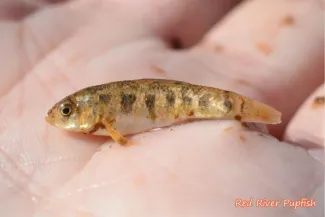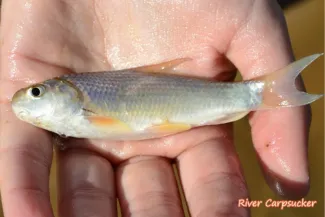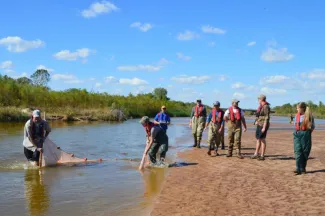
Twenty students from the University of Oklahoma's ichthyology class (the study of fishes) recently joined biologists from the U.S. Fish and Wildlife Service and the Wildlife Department's Wildlife Diversity Program as they seined portions of the Canadian River for the federally-threatened Arkansas River shiner. Biologists conduct these presence/absence surveys along a 300-mile stretch of the river twice a year, once in July and again in October.
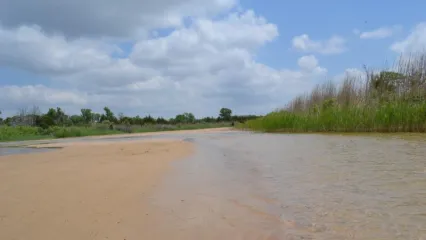
The Canadian River, a sandy, flood-prone river that bisects the state from west to east, is home to a number of fish and wildlife species. Flowing only minutes from the University of Oklahoma's Norman campus, the river also serves as a great learning laboratory.
Students from the Department of Biology's ichthyology class, co-taught by Bill Matthews and Edie Marsh-Matthews, made the short trek to the river last month to help biologists from the U.S. Fish and Wildlife Service and the Wildlife Department's Wildlife Diversity Program conduct surveys for the federally-threatened Arkansas River shiner.
Before stepping into waders and getting hands-on experience, students met with fisheries biologists Daniel Fenner (USFWS) and Curtis Tacket (ODWC) in the classroom to discuss ongoing fisheries work across the state, career opportunities with the Wildlife Department, and how state and federal agencies partner to recover endangered species like the Arkansas River shiner.
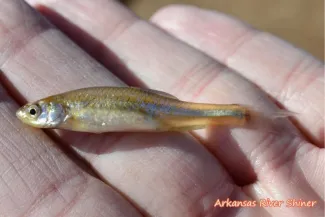
This small, pale-bodied fish rarely exceeds 2-inches in length and is now almost entirely restricted to the Canadian River of the Texas Panhandle and south-central Oklahoma. Eggs and larvae require approximately 130 miles of free-flowing river to complete their development process.
At the river, the class divided into three groups; each group was equipped with a 15-foot net, or seine, and practiced sampling various habitats. Because many fish species swim upstream into the net, the teams worked their way downstream, checking the nets every 10-15 yards.
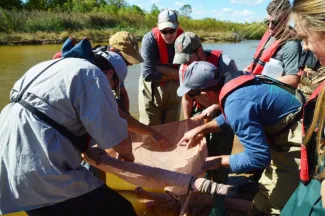
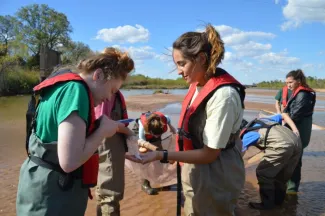
In addition to their target fish, the Arkansas River shiner, 12 species of other fish were documented, including the small Red River pupfish and the river carpsucker.
